Even though iPhotography is a place to perfect your digital photography, it’s important not to forget the origins of photography and how it’s developed (pun intended).
In a world where digital photography reigns supreme, it’s easy to forget about the classic beauty of film. However, many photographers still prefer the unique look and feel of film, particularly the 35mm format. In this guide, we’ll take a closer look at 35mm film photography and how to get started with it.
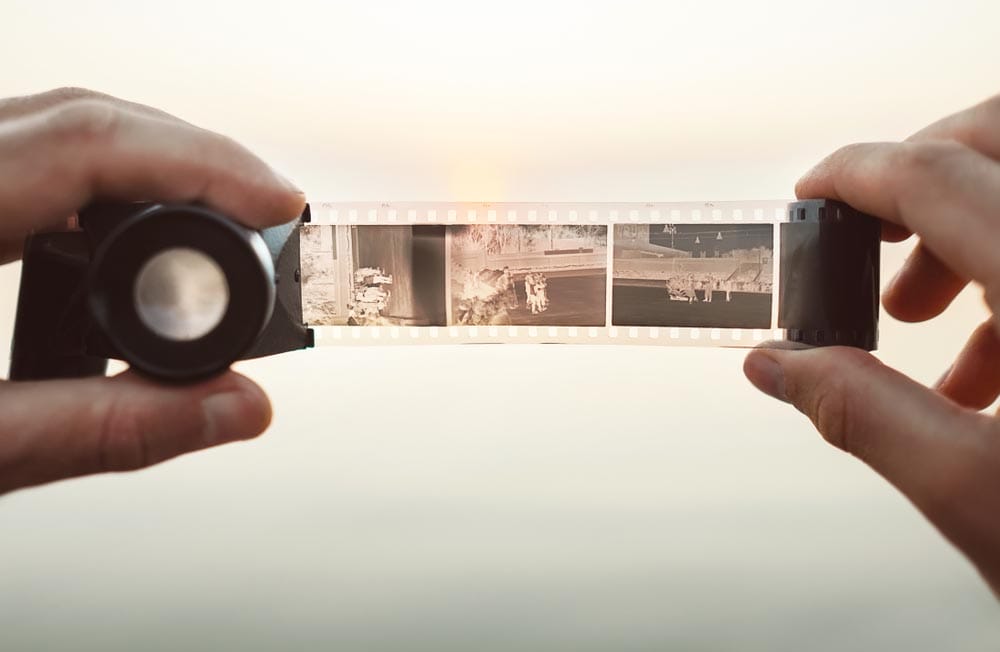
35mm film is a type of photographic film that is 35mm wide, hence the name. It was first introduced in 1892 by Thomas Edison and was used primarily for motion pictures until the 1930s, when it became popular for still photography as well.
35mm film is made up of a transparent plastic base coated with a light-sensitive emulsion that captures the image when exposed to light.
When a photograph is taken, the film is exposed to light, and the chemical emulsion on the film reacts to create an image. After the film is exposed, it is developed using chemicals, which brings out the image that was captured.
With 35mm film, each roll typically contains 24 or 36 exposures, meaning that the photographer can take that many pictures before needing to reload the camera with a new roll of film.
In recent years, digital cameras have become more prevalent, but 35mm film is still used by some photographers for its unique qualities, such as the graininess of the image and the way it captures light. Additionally, many photographers enjoy the process of working with film and the sense of anticipation that comes with waiting for the film to be developed.
It measures 35mm wide, hence the name. However, the actual width of 35mm film is slightly larger than 35mm, typically measuring 36mm wide. This is because the film needs to have perforations on both sides to advance through the camera, and the perforations take up a small amount of space on the edges of the film.
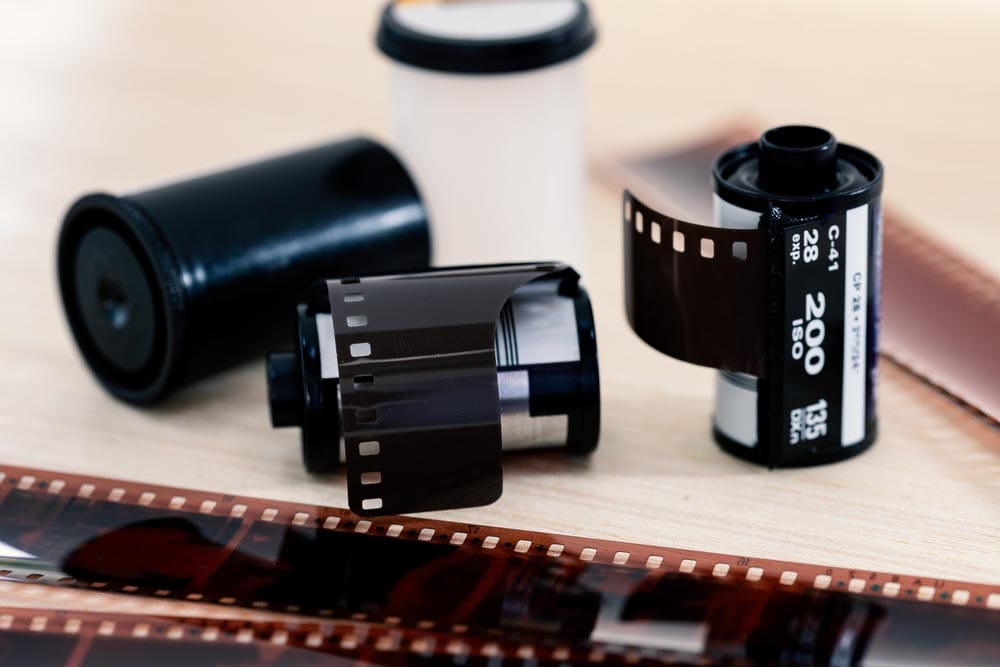
There are many types of 35mm film available, each with its own unique characteristics. The most common types include:
Colour negative film: This is the most popular type of film for everyday use. It produces colour images with a range of tones and is often used for portraits, landscapes, and snapshots.
Black and white film: This type of film produces images with a range of tones from black to white. It’s often used for artistic and documentary photography.
Slide film: Also known as a reversal film, slide film produces colour images with high contrast and saturation. It’s often used for landscapes, travel photography, and fine art.

The speed of a film refers to its sensitivity to light. The higher the film speed, the more sensitive the film is to light. This means that faster films can be used in lower light conditions, but they also tend to produce more grain and less detail. Slower films, on the other hand, produce finer detail but require more light to produce an image.
The most common film speeds are ISO 100, 200, 400, and 800. ISO 100 is the slowest film speed and is often used for outdoor photography in bright sunlight. ISO 800 is the fastest film speed and is often used for low-light conditions and action photography.
If you’re new to 35mm film photography, you’ll need to choose a camera. There are many options available, ranging from simple point-and-shoot cameras to professional SLRs. Here are a few things to consider when choosing a camera:
Manual vs. Automatic: Manual cameras allow you to control the aperture, shutter speed, and focus, giving you more creative control over your images. Automatic cameras, on the other hand, make it easier to capture images quickly and accurately.
Lens System: If you choose an SLR camera, you’ll need to consider the lens system. Some cameras have interchangeable lenses, while others have fixed lenses. Interchangeable lenses give you more flexibility, but they can be more expensive.
Brand: Finally, consider the brand. Some popular brands of 35mm film cameras include Canon, Nikon, Pentax, and Minolta.
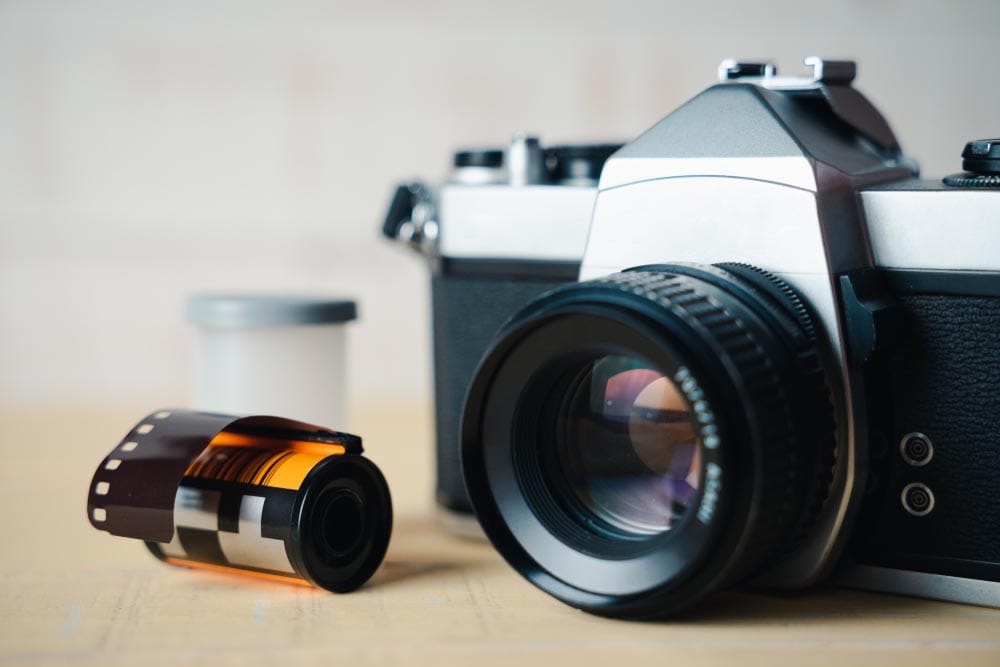
Once you have your camera and film, you’re ready to start shooting. Here are a few tips for getting the most out of your film photography:
Metering: Unlike digital cameras, 35mm film cameras don’t have built-in light meters. You’ll need to use a separate light meter or rely on the sunny 16 rule to determine the correct exposure.
Composition: Pay attention to composition when shooting with film. Take your time to frame your shot and consider the placement of elements in the frame.
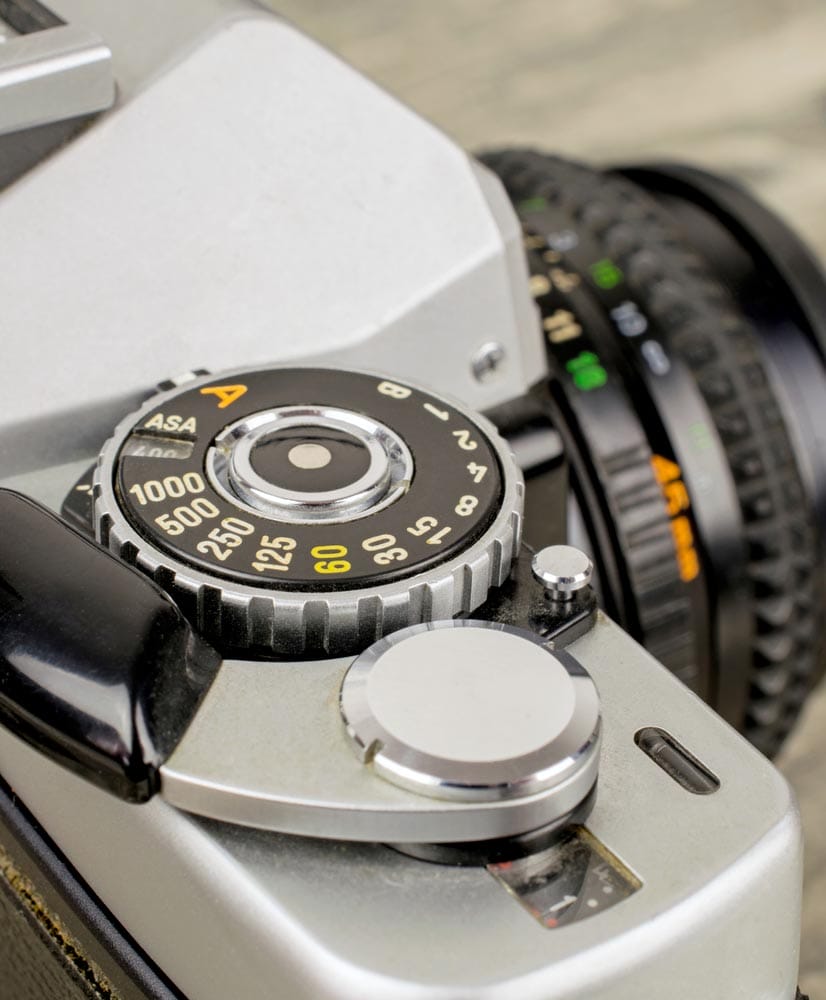
After you’ve shot your film, you’ll need to get it developed. You can either develop your film yourself or take it to a professional lab for processing.
Developing your own film can be a fun and rewarding experience, but it does require some equipment and knowledge. If you’re new to film photography, it may be best to start by having your film processed by a professional lab.
Once your film has been developed, you’ll have a roll of negatives that you can use to create prints. There are many options for printing your images, including traditional darkroom printing and digital scanning and printing. If you choose to print your images in a dark room, you’ll need to have access to a darkroom and the necessary equipment.
Digital scanning and printing is a more accessible option and allows you to edit and manipulate your images using the software.
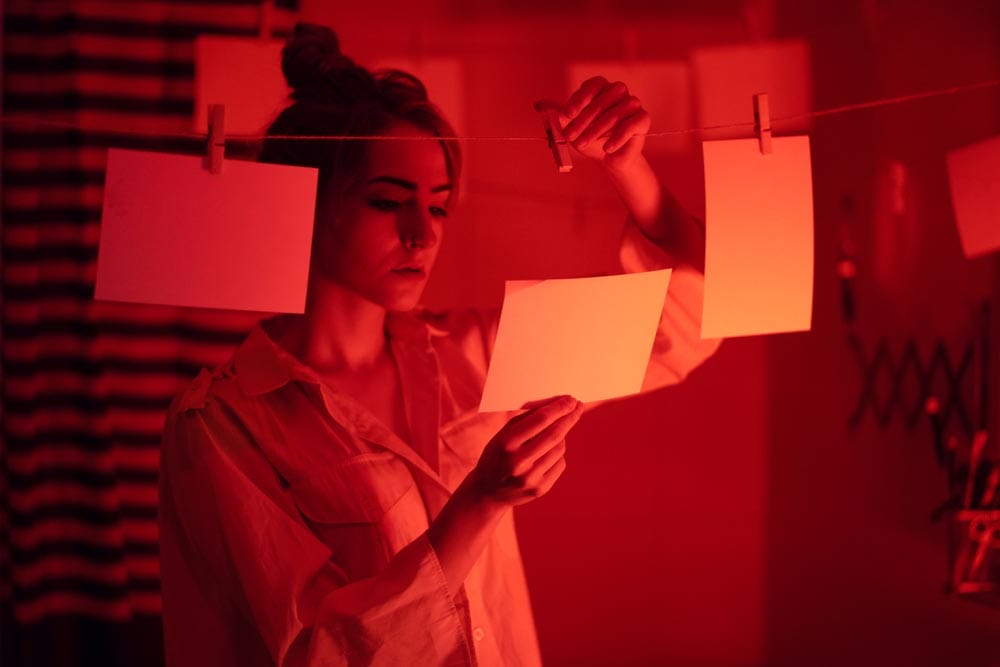
35mm film photography is often preferred by those who value the unique qualities of film, such as its graininess and the way it captures light. Some photographers enjoy the process of working with film, from loading the roll into the camera to developing the images in a darkroom.
Film can also produce an aesthetic that is difficult to replicate with digital cameras.
On the other hand, digital photography offers many conveniences that are not available with film. Digital cameras allow photographers to see the image immediately after it is taken and to make adjustments to the settings or composition as needed.
Digital images can be edited and manipulated using software, and there is no need for physical film or chemical processing.
Ultimately, the choice between 35mm film and digital photography is a matter of personal preference and the specific needs of the project or subject matter. Some photographers use both mediums, depending on the situation.
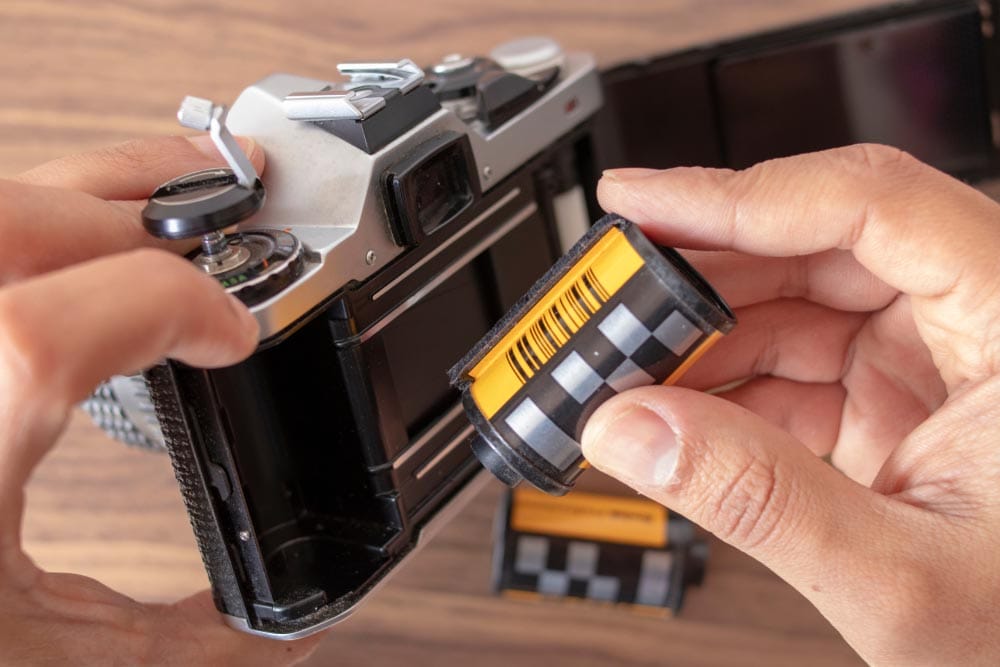
35mm film photography may be an older technology, but it still has a lot to offer.
The unique look and feel of film can add a special quality to your images, and the process of shooting, developing, and printing your own film can be a rewarding experience.
Discover TOP features in the Lightroom CC mobile app with this guide for enhancing your photo editing skills. For desktop and tablet too.
Shooting sunsets using amazing 5-in-1 magnetic lens filters from Kentfaith, the 1st choice for photo & video products.
Popular memory cards for photography – what’s the best SD card for your digital camera? Choose the right capacity and class speed in our guide
Learn the basics of photography – fast – with our FREE 60-Second Photographer online course. Each class is short and sharp with simple, actionable steps that give you immediate results.
x 30 lessons

© iPhotography™
Become a confident and competent photographer in less than 30 minutes!
Before you leave, make sure you’ve secured your FREE online photography course (worth £29.99)
Each class is just 60-seconds or less making it the fastest and easiest way to learn photography!